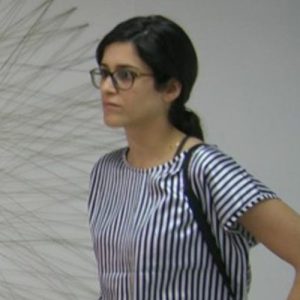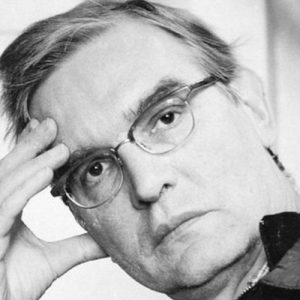
Monir Farmanfarmaian, née Monir Shahroudy, (born January 13, 1923, Qazvin, Iran—died April 20, 2019, Tehrān), Iranian artist who was known for her mirror mosaics and geometric drawings that bore witness to her cosmopolitan perspective, informed by a life journey that encompassed Persian culture and the Western art world.
Shahroudy was the youngest child of progressive parents, and her early recollections included paintings of birds and flowers in her family home in the ancient Persian city of Qazvin. Her father was elected to the parliament in 1932, and the family moved to Tehran; later she enrolled in the Faculty of Fine Arts at the University of Tehran. In 1944, when World War II thwarted her plans to study in Paris, she traveled to New York state, where she attended Cornell University and Parson’s School of Design. She found work in fashion illustration and graphic design, creating the Persian-violet trademark for Bonwit Teller department store. Her social circle included such artists as Joan Mitchell, Alexander Calder, Andy Warhol, and Frank Stella. In 1957 she returned to Iran to marry Abolbashur Farmanfarmaian, an international lawyer whom she had met in New York.
Farmanfarmaian began to explore her own country’s heritage, assembling an extensive collection that included textiles, Turkoman jewelry, and qahveh khaneh (“coffeehouse”) paintings featuring traditional storytelling motifs. Her floral monotypes earned a gold medal at the 29th Venice Biennale (1958), and in 1963 she had her first solo exhibition, in Tehran. Her own experiments with mirror mosaics began in the late 1960s after she saw compelling examples of the technique at various sites on her travels. Farmanfarmaian was inspired by ayeneh-kari, a traditional decorative technique of embedding fragments of mirrored glass in plaster. In her work Farmanfarmaian often fused enduring Islamic pattern making and a Modernist exploration of abstract geometric forms.
The Iranian Revolution of 1978–79 abruptly suspended Farmanfarmaian’s rising career in Iran. When she and her husband went into a self-imposed exile in New York, the Iranian government confiscated her art collection. For the following 26 years, she worked diligently, making mirror mosaics and reverse glass paintings for her friends and for her own pleasure. In 2004 she was able to return to Tehran and open a studio. Public commissions followed, including a mirror mosaic for the opening of the Jameel Gallery of Islamic Art in the Victoria and Albert Museum, London (2006), and a permanent six-panel installation for the sixth Asia Pacific Triennial of Contemporary Art at the Queensland Art Museum in Brisbane (2009). In 2014 Iranian director Bahman Kiarostami premiered his documentary Monir. Meanwhile, Farmanfarmaian continued to work, exploring the inherent geometric order of pattern, colour, and reflection. In 2015 she had the first comprehensive retrospective of her work in the United States. The exhibition “Monir Shahroudy Farmanfarmaian: Infinite Possibility: Mirror Works and Drawings 1974–2014” was held at the Solomon R. Guggenheim Museum in New York City.




 Argoon Art | Sell online in the simplest way possible
Argoon Art | Sell online in the simplest way possible







